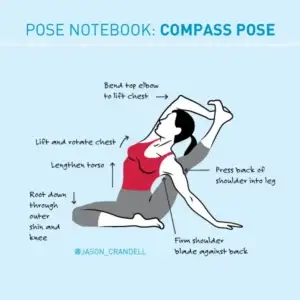Students often ask me if they should do a 200-hour yoga teacher training. I always answer with a resounding, ‘Yes!’ — even if they don’t plan to become a yoga teacher.
Here’s why: If you love yoga but want to better understand the philosophical underpinnings, the physiology and anatomy, and the history, a 200-hour yoga teacher training is the perfect opportunity.
Even the most adept teachers can’t convey the complexity of yoga in a regular 60- to 90-minute class. But a well-crafted 200-hour program can help you begin to understand and experience the vastness of yoga.
Having said that, it’s crucial that you choose a high-quality program. And with so many programs out there, how do you know which one is right for you?
Obviously, one of the best places to begin is with a teacher you know and connect with. But, in my view, it’s equally important to look for a few criteria in terms of the curriculum and the teaching methodology.
If you know me at all, you know that I have strong feelings about what to look for to ensure you enroll in a high-quality 200-hour program.
So, without further ado, here just a few things to look for when selecting a 200-hour yoga teacher training.
6 Things to Look for in a 200-Hour Yoga Teacher Training Program
Safe, up-to-date asana practice
Yoga is a wonderful, beneficial practice when done safely. And yet, it’s no secret that yoga injuries have been on the rise in recent years.
As a result, I’ve made changes to the way I sequence vinyasa yoga classes so that there is less repetitive stress. My co-teachers and I don’t teach asana alignment in a “traditional way” just because it’s traditional. We believe that there are instances where traditional asana alignment should be re-examined to facilitate a safer practice.
It’s important to find a teacher who understands poses and bodies so well, that they know how to adapt the pose to the person instead of trying to fit the person into the pose.
Bottom line: Look for someone who teaches that yoga postures are not one-size-fits-all. A topnotch 200-hour yoga teacher training will teach safe alignment AND balanced sequencing that reduces repetitive stress.
Deep knowledge of yoga anatomy and physiology
Learning anatomy is an essential part of a foundational yoga training. When you learn more about the body, it will heighten your awareness: your experience of the poses will deepen, your proprioception will increase, and you will learn how the breath affects your physiology.
It’s important to know that yoga anatomy is both art and science. Because of this, it’s important to find a teacher who is open to critical discourse. There are some outdated instructions and cues that have been baked into yoga culture. One example that comes to mind is that twists “wring out toxins.”
I’ve spent the past 10 years working with professionals across several modalities — from physical therapists to surgeons to doctors of sports medicine — so that I can teach an evidence-based anatomy curriculum. I also strive to be welcoming to challenges and questions of all kinds.
Bottom line: Make sure you know who is teaching the yoga anatomy hours of your 200-hour program. find out who they were trained by. When in doubt, email them with questions! They should take the time to answer.
A yoga teacher who understands the foundational yoga texts
A thoughtful yoga philosophy program will thoroughly introduce aspects of yoga that you can’t cover in a typical class. You’ll dive into Patanjali’s Yoga Sutra, unpacking important verses and the eight limbs. You’ll come to understand how asana practice has evolved. Perhaps most importantly, you will gain an experiential understanding of how to weave the teachings into your own life.
Bottom line: Find a yoga teacher training that covers foundational texts like The Bhagavad Gita, Upanishads, Hatha Yoga Pradipika, Patanjali’s Yoga Sutra, and more.
An intelligent, skillful approach to hands-on adjustments
Most modern teachers have re-examined how to offer safe manual adjustments to students. I do not do deepening adjustments. Instead, my teachers and I offer stabilizing adjustments. You can learn more about my approach by reading this blog where I offer 10 ideas for honing your hands-on adjustments. You can also listen to this Yogaland podcast: All About Yoga Adjustments.
Bottom line: The days of lying over students’ bodies to get them to go deeper are long gone.
Practice teaching! They must include practice teaching as part of the curriculum
Even if you’re not sure you want to teach, learning to teach in front of a group is an incredibly valuable skill! The goal of practice teaching is not to be perfect out of the gate. In the right setting, practice teaching can be an opportunity to overcome your fears in a community of supportive peers. Over time, you’ll learn to receive constructive, compassionate feedback.
Bottom line: An experienced 200-hour teacher will endeavor to create a safe space where everyone feels comfortable and supported as they learn to teach.
A teacher who can hold space that you can gain life skills
Going through 200 hours of training in a mind-body discipline like yoga can be transformative and also intense. Ultimately, when you finish your program, you should feel like you have gained insight into yourself and tools to live a balanced life.
Bottom line: A good yoga teacher training will give you the tools to observe your patterns and tendencies, and why you suffer and react the way you do. The training will give you the life skills to show up and handle situations in a healthier way.



